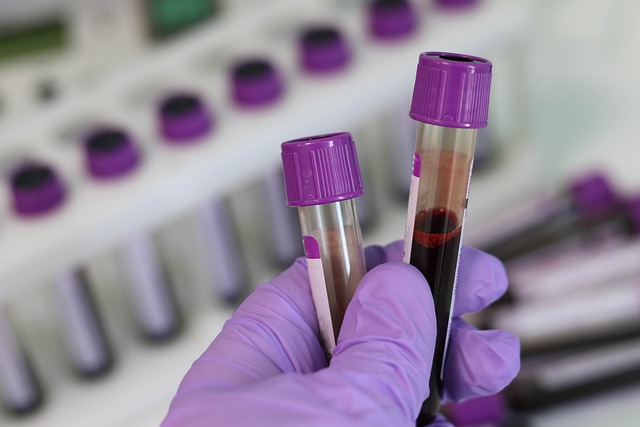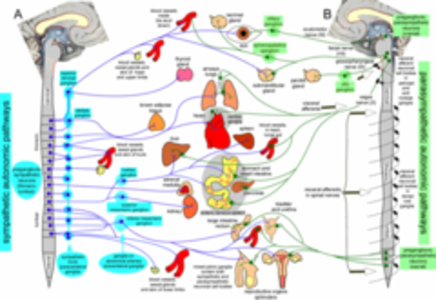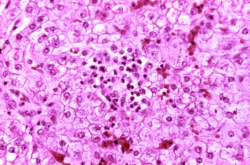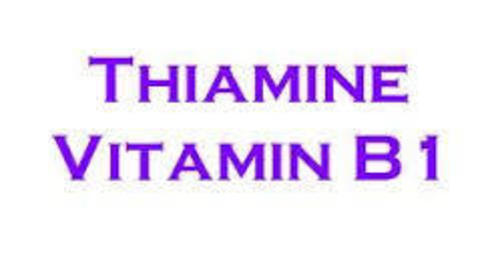It has recently been found that a number of individuals who have experienced adverse reactions to the Gardasil or Cervarix vaccines and some medications have had a blood test that indicated thiamine deficiency (TD), or its abnormal chemistry (TAC) in the body. This article reviews the methods by which TD or TAC can be detected.
Blood Thiamine – Vitamin B1 Concentrations
Measuring blood thiamine or B1 concentrations is the laboratory test that is commonly offered by doctors. It is only helpful in extreme cases and is usually in the normal range even when there is clinically demonstrable abnormal body chemistry. The reason for this is that thiamine does its work inside cells and has no effect outside them. When we get this vitamin from our natural food, it goes through a very important genetically determined process to enter our cells. There can be something wrong with this system so that even a dietary sufficiency will not be effective and the concentration in the blood will be in the “normal” range. When the B1 is inside a cell, it has to be treated by a biochemical process known as phosphorylation to become an active vitamin. Failure of this mechanism will result in a “normal” blood level but no vitamin activity. We therefore have to use a method that actually detects this “vital” activity.
Erythrocyte Transketolase: The Test of Choice for Assessing Thiamine Deficiency
Erythrocyte is the technical name for red cells. These are the cells that carry oxygen to our tissues and they contain a complex mechanism that depends on a series of biochemical processes, each of which requires an enzyme. Transketolase is one of these enzymes. Its activity can be detected by a laboratory test and measuring transketolase is the only way of showing that the activity of thiamine is normal. The reason for this is that all the enzymes in body and brain cells require one or more “cofactors” that enable the enzyme to function properly. Vitamins and some minerals are cofactors and that is why they are so important. We have long known that they have to be obtained from our diet, but the reasons given above make it clear that dietary intake may be normal and still result in poor function of the enzyme in question.
Transketolase requires two cofactors, thiamine and magnesium and the laboratory test is designed to show their deficiency or abnormal chemistry by detecting the activity of the enzyme. Because thiamine is vital to cellular energy production, its deficiency affects first the tissues that are the most active oxygen using tissues, the brain, nervous system and heart.
Method of Performing Erythrocyte Transketolase Test
First, the baseline (as it exists in the patient’s red cells) activity of the enzyme is detected by measuring the rate at which it synthesizes its product, the chemical substance next in line in the series of biochemical reactions that are referred to as a “pathway” to the final end product. This is reported as TKA and it has a normal range. In moderate thiamine deficiency the TKA can still be in the normal range but if it is low it indicates that the enzyme is not doing its job efficiently.
The next step is to repeat the test after the addition of thiamine pyrophosphate (the biologically active form of the vitamin) to the test tube reaction. If there is an acceleration of the product synthesis, it indicates that the enzyme needed its cofactor to become efficient in its job. This is reported as a “percentage increase in activity over baseline”. This is called TPPE (thiamine pyrophosphate effect); the higher the TPPE, the greater the deficiency. A “normal” range for TPPE is allowed up to 18% and this was drawn from people that were supposedly “healthy”, meaning free of symptoms.
In essence the TPPE should be zero, indicating that the enzyme is fully saturated with its cofactor. If a person is (unknowingly) sensitive to sugar, this test may be abnormal and show the effect of sugar in that individual. This is because thiamine is vitally necessary to metabolism of ALL simple sugars. That is the reason why sugar caused disease is so common in our world today.
In order to test thiamine deficiency, one must request transketolase testing. Not all labs can perform this test and so many will substitute the simple blood vitamin B1 testing. This test is insufficient for detecting thiamine deficiency for the reasons stated above. In this case, you may have to advocate on your own behalf and find the appropriate lab testing service.
Additional Labs
Since the publication of this article, the US lab performing these tests has closed. We have just learned a lab in London offers transketolase testing: Biolab Medical Unit. As we learn of additional labs offering the appropriates tests we will post them here.
Health Diagnostics and Research Institute in New Jersey also apparently will test for thiamine pyrophosphate (TPP) and erythrocyte transketolase (ETKA), but these tests are not listed on their menu and have to be requested.
In Germany – SYNLAB MVZ Leinfelden-Echterdingen GmbH
Labor Dr. Bayer
Nikolaus-Otto-Str. 6
70771 Leinfelden-Echterdingen / Germany
In Spain – Estudios Analiticos – Avenida nuevo mundo 11 (Madrid)
http://www.eaac.es
Email: info@eaac.es
Telephone: 916334223
Fax: 91 533 10 44 / 91 632 44 17
Information: Monday to Friday: 8:00 a.m. to 8:00 p.m. Saturdays: 9:00 a.m. to 10:30 a.m.
We Need Your Help
More people than ever are reading Hormones Matter, a testament to the need for independent voices in health and medicine. We are not funded and accept limited advertising. Unlike many health sites, we don’t force you to purchase a subscription. We believe health information should be open to all. If you read Hormones Matter, like it, please help support it. Contribute now.















